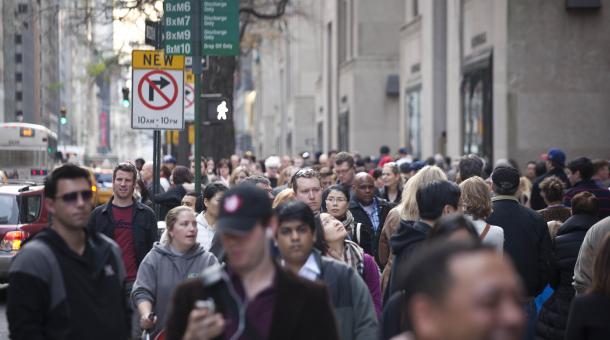چه چیزی شهر را پیاده پذیر می کند ؟ به عقیده اسپیک شهرساز و مولف کتاب شهر ( پیاده مدار) پیاده پذیر(2012) ، مسیر پیاده باید قابل استفاده، ایمن، راحت و جالب باشد تا شما قادر باشید مردم را از داخل اتومبیلهایشان به پیاده رو بکشانید. پیادگان برای اینکه مورد تهدید و برخورد با اتومبیلها قرار نگیرند، باید بسیار بجنگند. شهرها هنوز اغلب اتومبیل محور می باشند. همچنین بعقیده اسپیک پیادگان نیاز به خیابانهای راحت دارند که توسط ساختمانها بجای دیوارها و پارکینگها در مسیرشان احاطه شده باشند . به اعتقاد او گرچه در شهرهای نیویورک، شیکاگو و سانفرانسیسگو اقدامات زیادی برای فراهم آوردن محیط دوستانه برای پیادگان انجام داده اند، اما هیچ شهری در آمریکا تا کنون به اندازه شهر پورتلند پیاده پذیر نشده است. شهرهای آمریگا هنوز فاصله زیادی تا پیاده پذیری دارند. به عقیده اسپیک، شهرها توسط شهرداران آنها برنامه ریزی نمی شوند، بلکه توسط کارهایی که توسط مدیریت شهری بر مبنای پاسخ به خواسته های مردم در خصوص بهبود ترافیک و پارکینگ و صورت می پذیرد، برنامه ریزی می شود.
Here are the author’s ten steps of walkability, with a memorable line from his description of each:
Put cars in their place
Mix the uses
Get the parking right
Let transit work
Protect the pedestrian
Welcome bikes
Shape the spaces
Plant trees
Make friendly and unique [building] faces
Pick your winners
صحبت های اسپیک را در این لینک ببینید
What makes a city walkable? According to Jeff Speck, the author of “Walkable City: How Downtown Can Save America, One Step At A Time,” a walk has to be useful, safe, comfortable, and interesting if you’re going to get people out of their cars and onto the sidewalks.
“The pedestrian has to have a fighting chance against being hit by automobiles,” says Speck, “but also the streets need to be comfortable in the way they’re shaped by buildings, and you can’t have a bunch of blank walls and parking lots to walk by.”
Speck says that 77 percent of Millennials want to live urban cores. Of course, New York, Chicago and San Francisco have done a good job keeping their cities pedestrian-friendly, but Speck says no city has put the thought into walkability that Portland, Ore., has.
“The VMT [vehicle miles traveled] of your typical Portlander peaked in 1996,” says Speck who lauds Portland for a long-term strategy to minimize the importance of the car, “and as a result, one economist has calculated that about.3.5 percent of GDP is money saved by driving less.”
Many cities are doing good things to make their cities more walkable, but Speck says most average American cities still have a long way to go to become truly walkable. Why? The car is still the driving force in city planning.
“A city is being planned not by its mayor,” says Speck, “but by a public works director who is responding to complaints about traffic and parking.”



